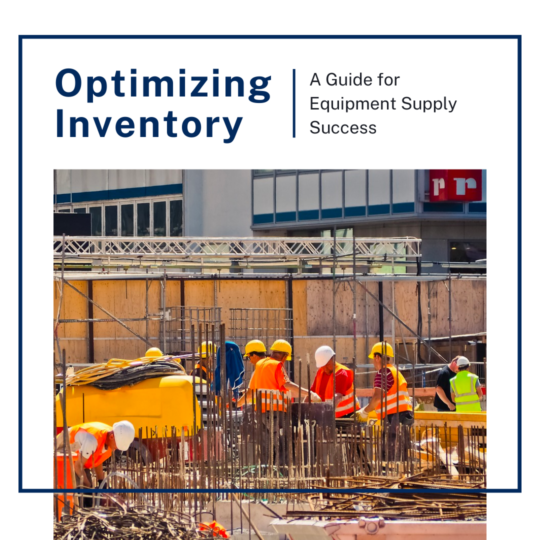Effective inventory management is the backbone of any successful equipment supply business. Whether you deal with construction, heavy machinery, or any other type of equipment, having the right items in stock at the right time is crucial for meeting customer demand, maximizing profitability, and staying competitive in the market. In this guide, we’ll explore strategies for optimizing your inventory to ensure smooth operations and increased revenue.
1. Analyze Demand Patterns: One of the first steps in optimizing inventory is understanding demand patterns for your products. By analyzing historical sales system data, you can identify which items are fast-moving and which ones are slow-moving. This insight allows you to adjust your inventory levels accordingly, ensuring that you always have enough stock of high-demand items while minimizing excess inventory of slow-moving ones.
2. Implement Just-in-Time Inventory: Just-in-time (JIT) inventory management is a strategy that involves ordering and receiving inventory only when it’s needed, thereby reducing carrying costs and minimizing the risk of obsolescence. By closely monitoring demand and maintaining strong relationships with suppliers, you can streamline your supply chain and implement JIT practices to optimize inventory levels.
3. Utilize Technology: Leveraging technology is essential for efficient inventory management. Advanced inventory management software can automate processes such as order fulfillment, replenishment, and forecasting, maximizing equipment utilization and reducing the likelihood of human error. Additionally, integrating your inventory management system with other business systems, such as your equipment management system, can provide valuable insights into customer preferences and purchasing behavior.
4. Employ ABC Analysis: ABC analysis is a technique used to categorize inventory items based on their value and significance to the business. Items are classified into three categories: A, B, and C, with A items representing the most valuable and high-demand products, B items representing moderately valuable items, and C items representing low-value or slow-moving items. By prioritizing inventory management efforts on A items, you can maximize profitability and ensure customer satisfaction.
5. Optimize Warehouse Layout: The layout of your warehouse plays a crucial role in inventory optimization. Organizing products based on demand frequency and accessibility can reduce picking and replenishment times, minimize stockouts, and improve overall efficiency. Additionally, implementing proper storage techniques, such as FIFO (first in, first out) or LIFO (last in, first out), can help prevent product spoilage and obsolescence.
6. Establish Safety Stock Levels: While it’s important to minimize excess inventory, having some buffer stock on hand is essential for mitigating the risk of stockouts and unexpected fluctuations in demand. By establishing safety stock levels for key items, you can ensure continuity of supply and maintain high levels of customer service, even during peak periods or supply chain disruptions.
7. Monitor Key Performance Indicators (KPIs): Tracking key performance indicators, such as inventory turnover ratio, days sales of inventory, and fill rate, is essential for evaluating the effectiveness of your inventory management efforts. By regularly monitoring these metrics and benchmarking them against industry standards, you can identify areas for improvement and make data-driven decisions to optimize your inventory.
Optimizing inventory is a continuous process that requires careful planning, analysis, and execution. By analyzing demand patterns, implementing JIT practices, leveraging technology, employing ABC analysis, optimizing warehouse layout, establishing safety stock levels, and monitoring KPIs, you can streamline your inventory management processes, increase efficiency, and ultimately drive greater success for your equipment supply business. And remember, integrating your inventory management system with a robust equipment management system can further enhance your ability to manage inventory effectively and efficiently.

